|
I did not get a chance to post for three days; here is the work I did during that hiatus. All good, I believe.
State 6 of "Arena" ended one day of work, me in quandary. I did not understand how to proceed. The next day I returned to the studio, made state 7. I am happy with this solution, but cannot declare it complete. This drawing interests me. It is fully abstract, references to walk-around reality are vague. It is very much about surface and touch. I believe Mark Rothko would like it, probably Philip Guston too. I am doing less commentary because my work is speaking more loudly, more clearly. If you look at my last two drawings you will see me finding ground, enjoying the surface as I play with space and time. The forms are few, but very important in defining space.
Aristotle wrote, "Style to be good must be clear.... Clearness is secured by using the words that are current and ordinary." In Song of Myself, Walt Whitman states, "He most honors my style who learns under it to destroy the teacher." And here I am. I have learned from my teacher (Philip Guston). I have now removed all his idiosyncratic ideas from my works. I did not destroy him, as Whitman suggests I do, but I have moved away from him, I have created my own style. Clearness is an issue with me. I am working toward strong personal engagement with my viewers. Aristotle's idea is important to me, i.e., use of ordinary language is necessary to clarity. For me, the visual artist, ordinary language is visual art's most basic principles and elements. The most basic language of art is non-representative; it is color, form, composition, surface, value, et cetera. Basic visual art language also contains imagery because it has form and it contains the artifice of light. The viewer may call this "Representative Imagery," but I do not want to dilute meaning in art by representing something perceived in the real world. I have destroyed one idea of Philip Guston's. Guston's late work, it allegiance to simple, Representative Imagery, is the distraction I have destroyed. It must be destroyed because it hinders perception of the actual expressive quality that resides in the basic language of visual art. Yesterday's drawing exhibits an exploration of surface, surface as a flow of light and space. As I made this drawing I thought of Mark Rothko's work. Rothko's clarity was his reduction; his painting are reduced to expressive play on surface and light. The force of my will made this one. It is apropos of my need to grab your attention, grab my attention. I center you, I center me, by using strong vertical forms. Somehow, when I was finished with this drawing, I was reminded of Picasso's "Crucifixion" from 1930. I believe it to be one of Picasso's most remarkable works, different as it is in color, space, and forms from anything else Picasso. Yes, in this crucifixion there is relationships to everything Picasso had done, and would do, but Picasso's approach here is quite different. The viewer is centered by the light-valued blue of the Christ figure and his distraught mother. After this centering, the viewer can wander, be continuously surprised by the complete animation, the literal references, within the composition, one after the next. My drawing is simpler, yet equally haunting. This bring me to the question of background. There is blank paper in my drawing. Does that work? I usually like to touch every surface. I usually feel the need to identify every part of my paper's surface as part of my space, my time, and my composition. That did not happen in this drawing's background. Does it work? There is a bold, forceful grab here: the viewer is captured by strong, vertical forms, I do believe the white paper ground serves its contrasting purpose. I see the white as definitive space; it is the flat plane in front of which the rest of the composition resides. Notice how Picasso dealt with his background and the negative space; four flat colored areas: blue, yellow, orange, red. Is the viewer bothered by these unidentifiable spaces? No! Instead the multiple compositionally positive forms grab and install the viewer within the composition. The forms are strong enough to support the vague spaces and surfaces Picasso's flat colors depict. 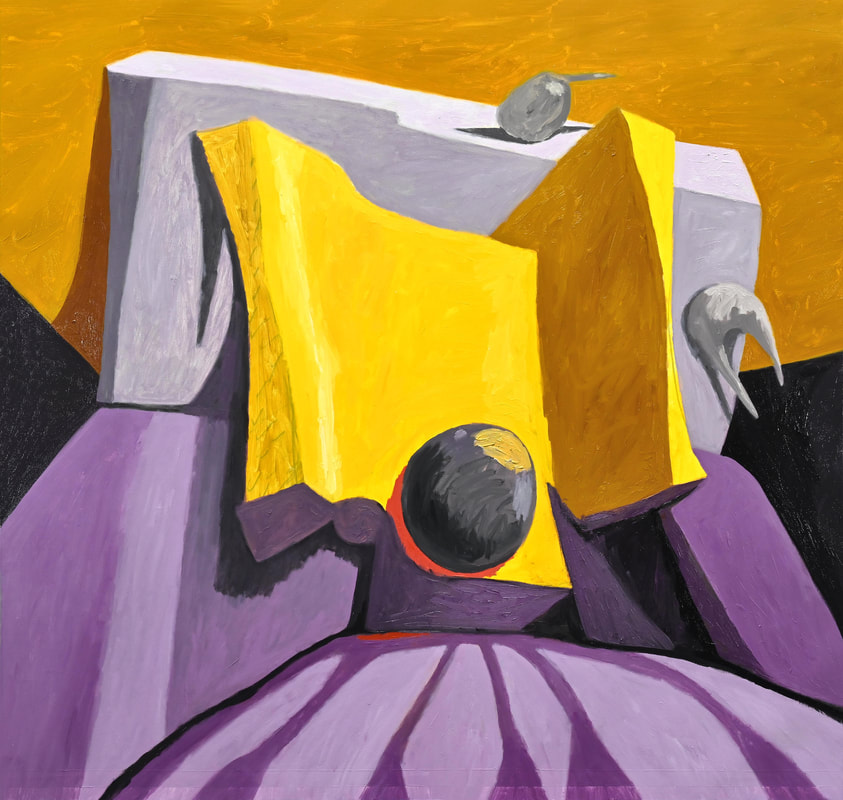 "The Opposite of Indifference" (2021 No.4, state 08), oil on canvas, 54x51 inches, {"The opposite of love is not hate, it's indifference. The opposite of art is not ugliness, it's indifference. The opposite of faith is not heresy, it's indifference. And the opposite of life is not death, it's indifference. Because of indifference one dies before one actually dies. To be in the window and watch people being sent to concentration camps or being attacked in the street and do nothing, that's being dead. His or her neighbor are of no consequence. Their hidden or visible anguish is of no interest. Indifference reduces the Other to an Abstraction." - Elie Wiesel, "US News & World Report" (27 October 1986)} Feeling and touching is a silent activity. Today I will be silent🤫
The painting, "Amidst a Falling World", will be exhibited at the prestigious 70th Annual A-ONE Exhibition at Silvermine Galleries in New Canaan, CT. The exhibition opens September 5, 2020. Yesterday I got extremely close to completing "Amidst a Falling World". A couple more touches and it will be complete.
My struggle to make sense of my personal vision has been mitigated by my efforts to complete "Amidst a Falling World". I understand better a means to represent personal clarity because I had to clarify "Amidst a Falling World". There is strength in simplicity. Yesterday I worked to make simple clarity available in my drawings. One of my problems is my sheer love of touch; my enjoyment of making marks has the ability to distract me from clarity; I enjoy making marks that represent surfaces, forms, and the representation of light on forms and surfaces. I get carried away, swept away, as I seek image though marks of graphite. Yesterday's drawing No.2 swept me into many more pencil marks than No.1. Three million strokes and counting.... Yesterday's drawing celebrates the marking of a white piece of paper with graphite from a pencil. Later yesterday, as I rested reading in my living room, my arm let me know it had been taxed. I had been enjoying finding forms, finding surface, finding space, finding light, and finding composition! This simultaneity-filled activity is a celebration of mindfulness. The more I do it the longer I can sustain it! This is "practice", as defined by veteran meditators. The Buddha would be proud of me! I have not obtained Buddhahood, but I am moving in that direction. Shravasti Dhammika, a Theravada monk, writes: I spent last weekend in New York City. I saw a lot of art. Some of it excellent, some has mysteriously gotten great attention from buyers & collectors (despite being devoid of profundity). My biggest interaction with art relevant to me, was the massive exhibition of works by Alberto Giacometti at the Guggenheim Museum. Giacometti and I share love of form and love of touch; we both scratch every part of the surface of everything we make. Giacometti and I love to feel our way through a work, whether it be a drawing, a painting, or a sculpture. Because I wish to get to the studio as soon as possible, I leave you with a couple works by Giacometti and one by me. Mine was made yesterday. Giacometti died in 1966. 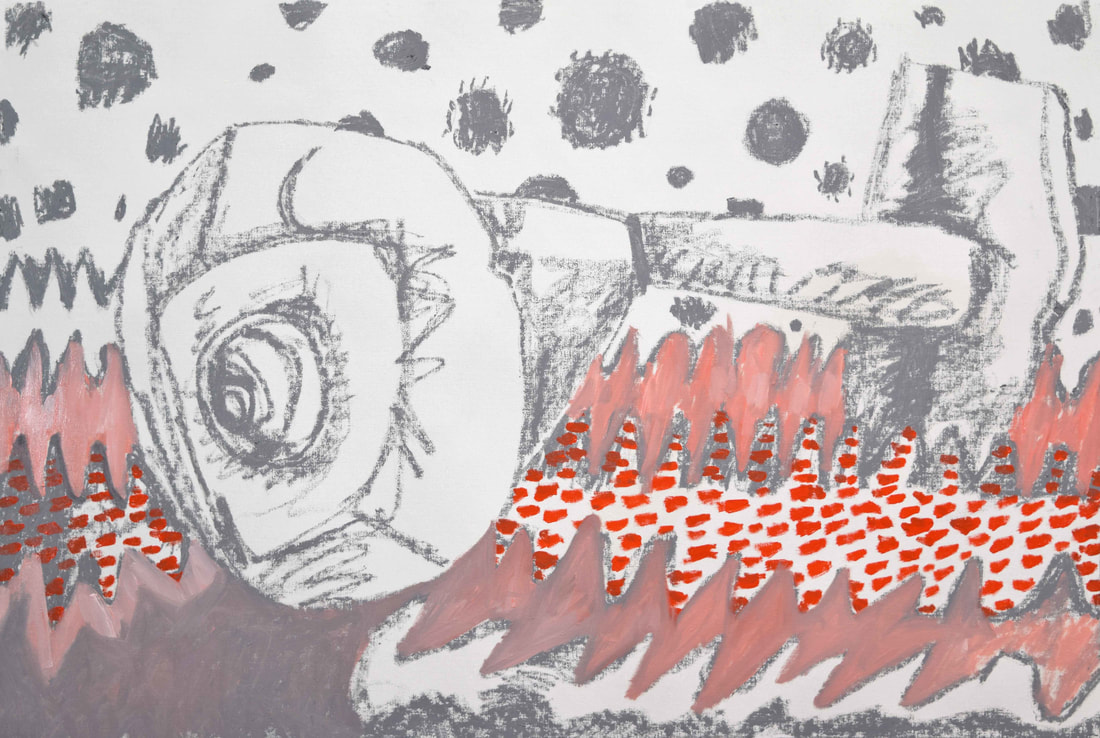 "Chocorua" (2018 No.5, state 2), oil on canvas, 34x51 inches {"A substitute for all the gods, This self, not that gold self aloft, Alone, one's shadow magnified, Lord of the body, looking down, As now and called most high, The shadow of Chocorua" - Wallace Stevens, "The Man with the Blue Guitar", verse XXI} The drama of yesterday's drawing insists upon the reproduction seen here, where the white ground appears gray. I tried to reproduce this authentically, as seen in actual. There is success here, as this reproduction allows the viewer to see the play in lower versus the upper half. In today's reproduction the immense amount of surface work in the lower half cavorts nicely with the artifice of 3D-space in the upper half.
Chocorua is going, and coming. It is calling me to be entertained with surface romp, to perform it like a music jam. |
To read my profile go to MEHRBACH.com.
At MEHRBACH.com you may view many of my paintings and drawings, past and present, and see details about my life and work. Archives
April 2024
|
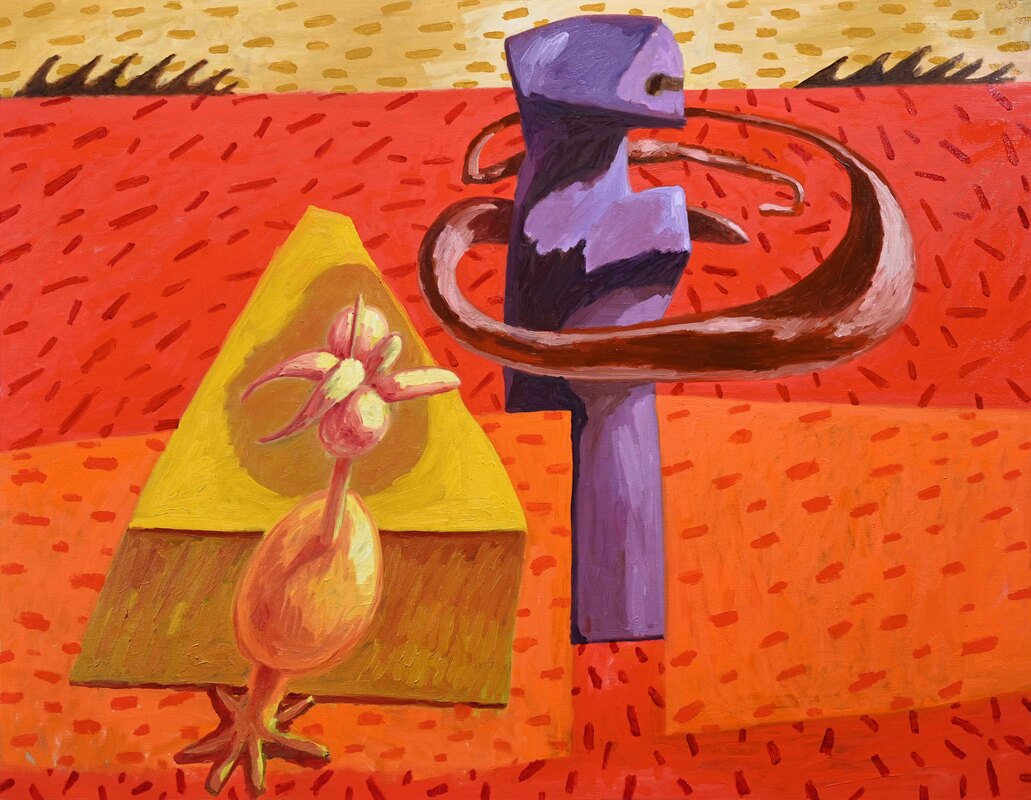
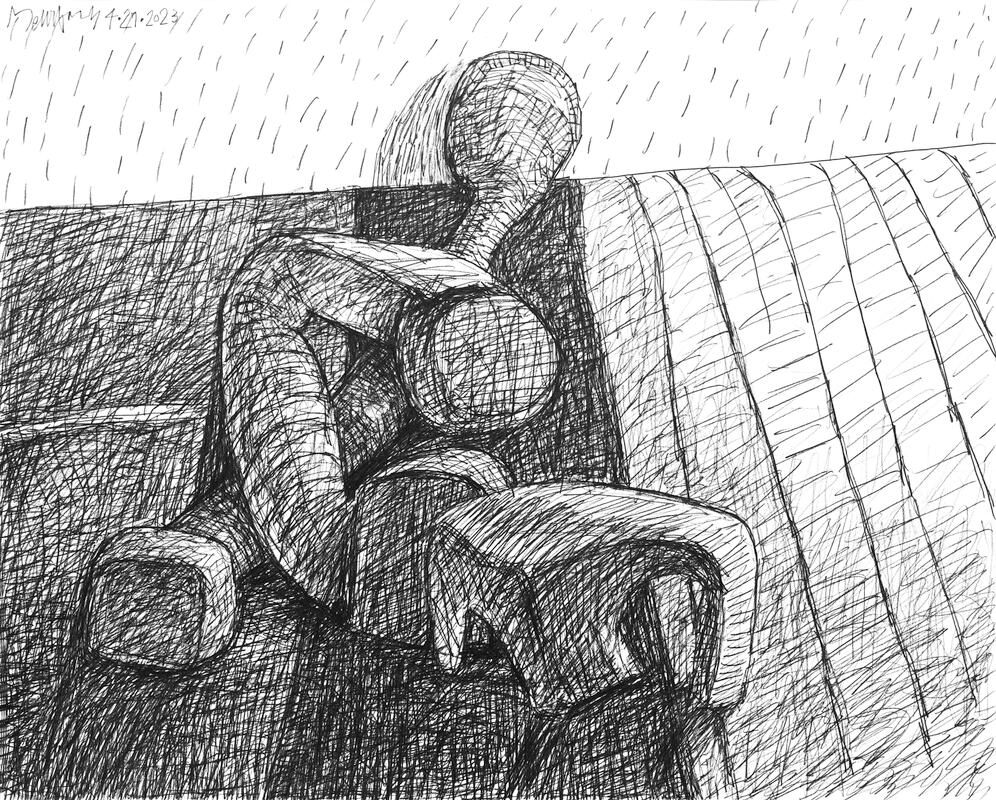
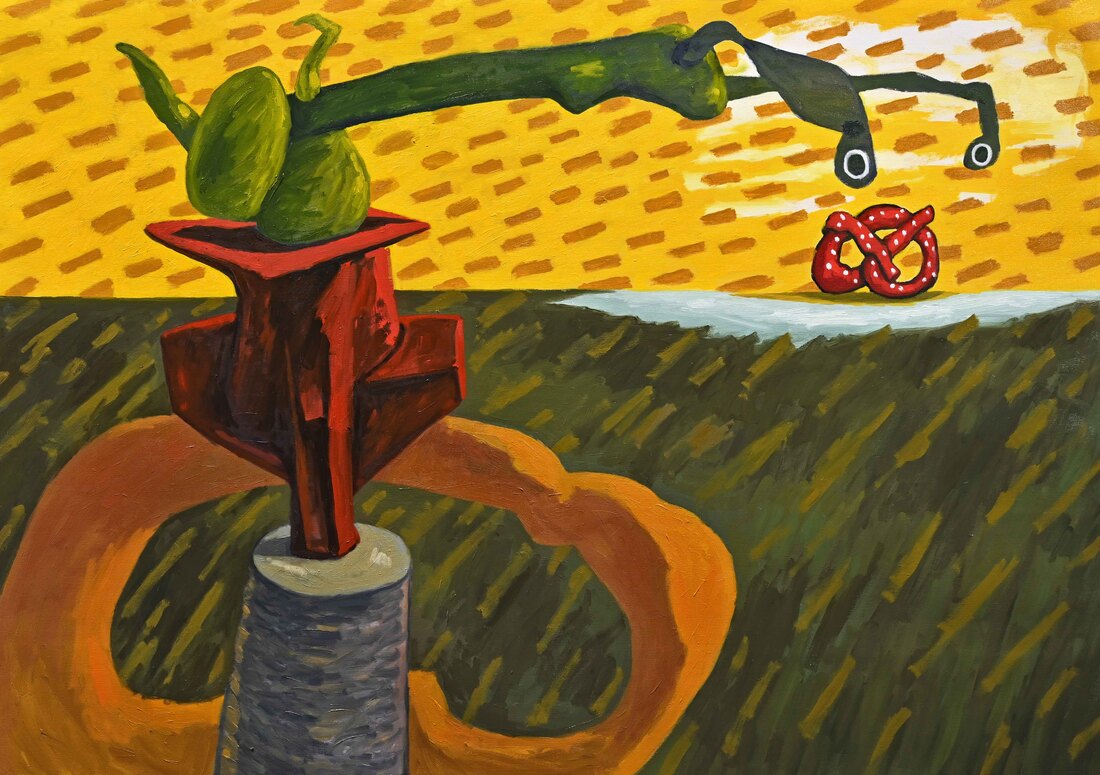
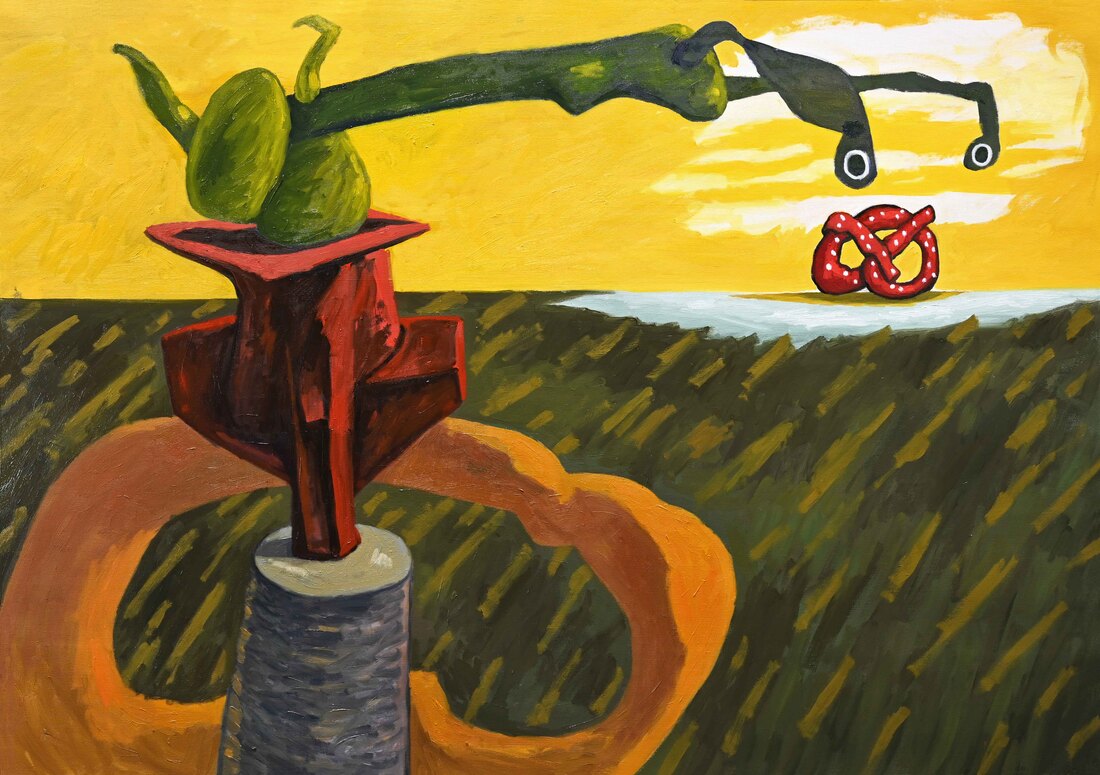
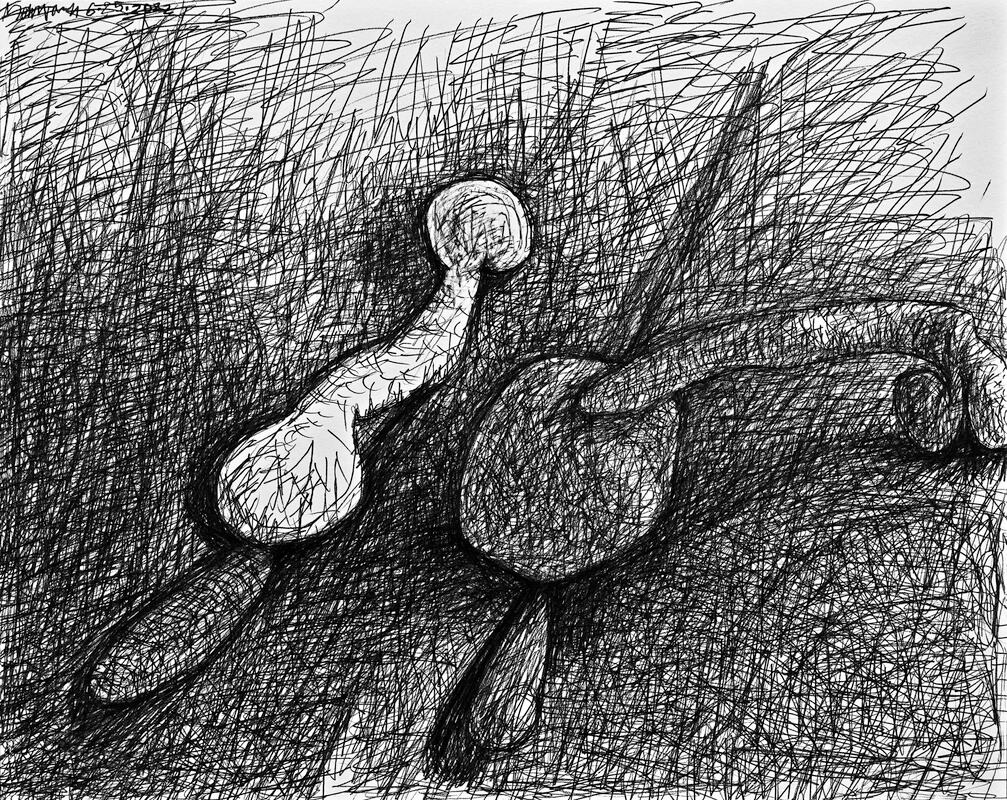
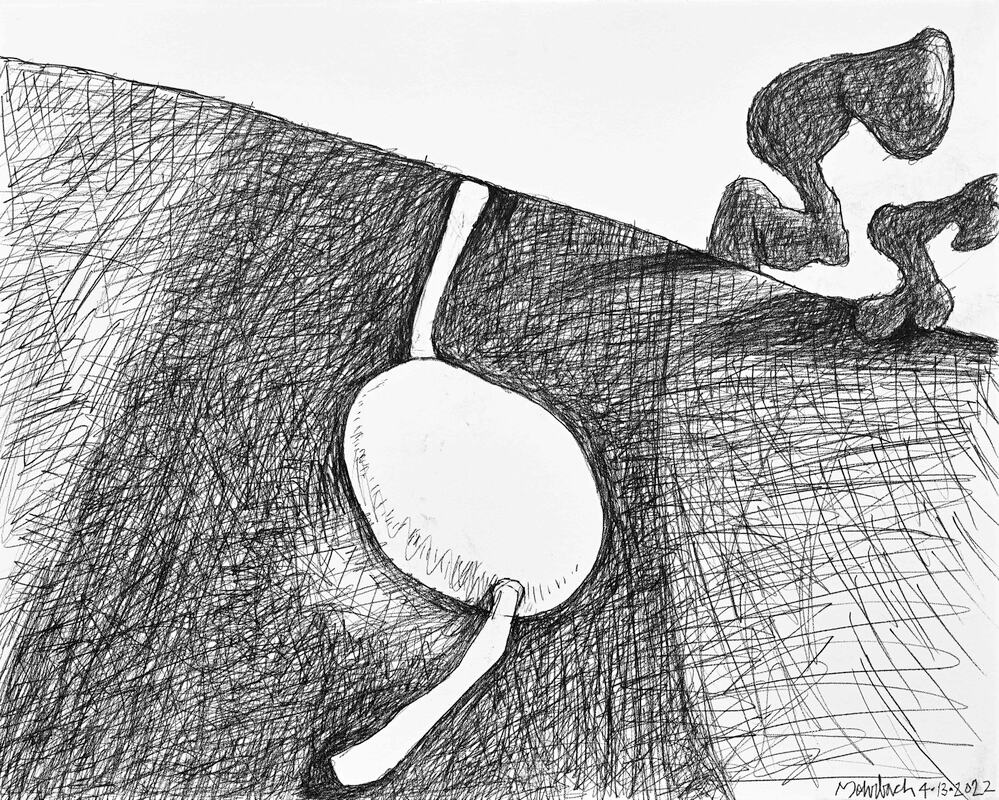
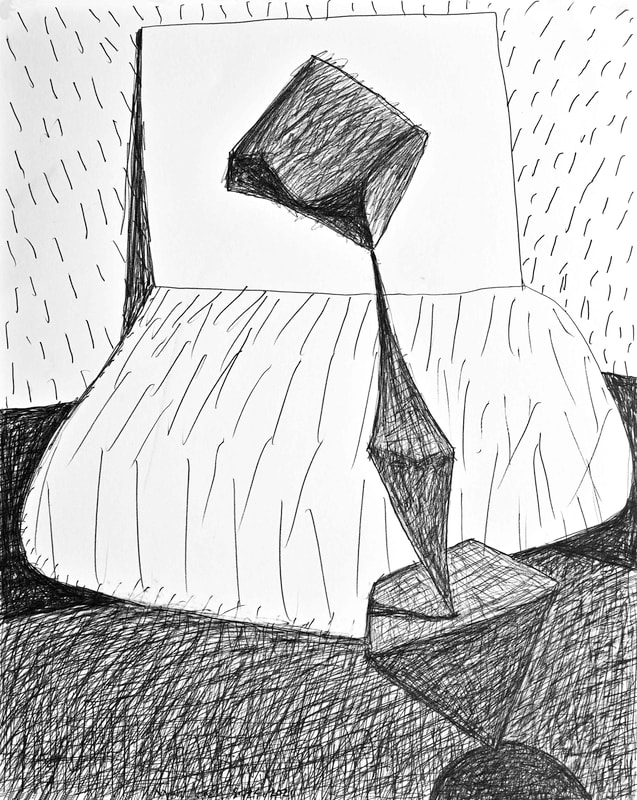
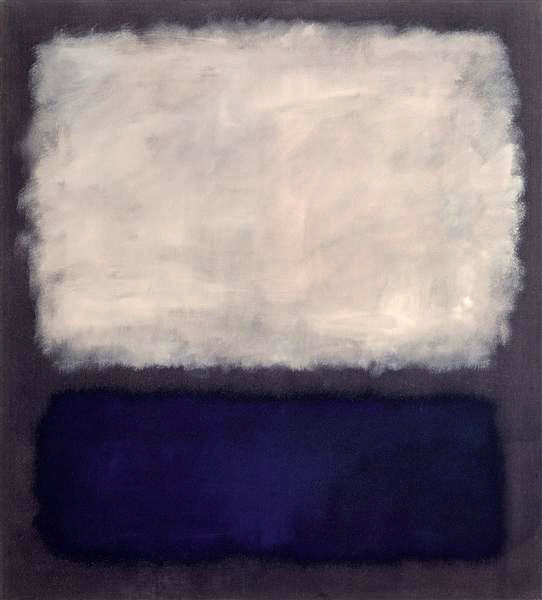
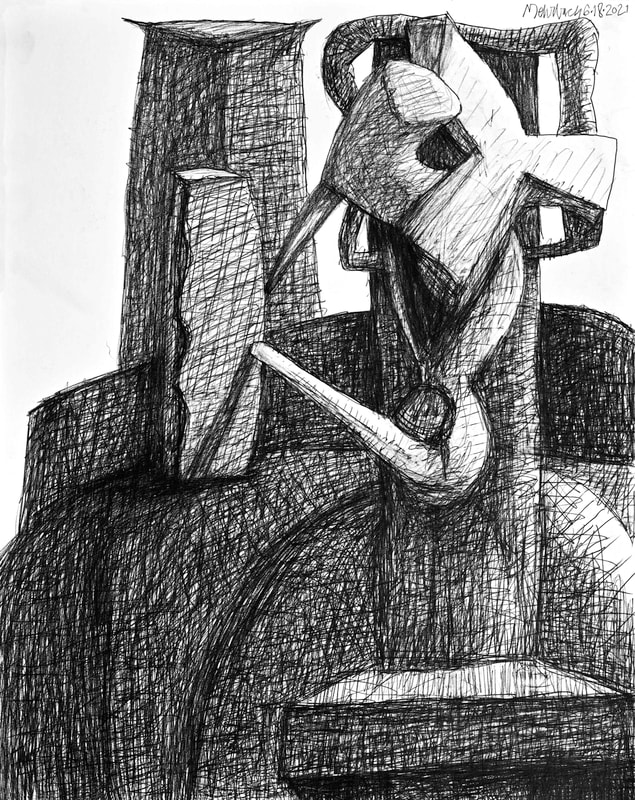
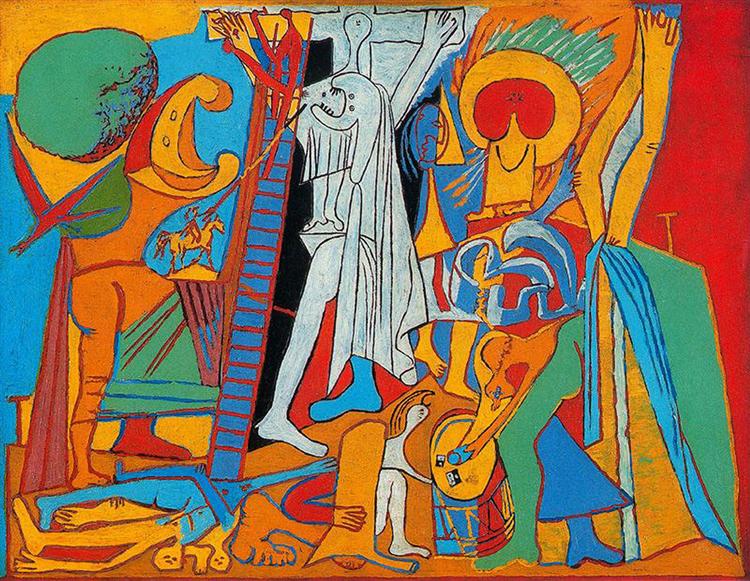
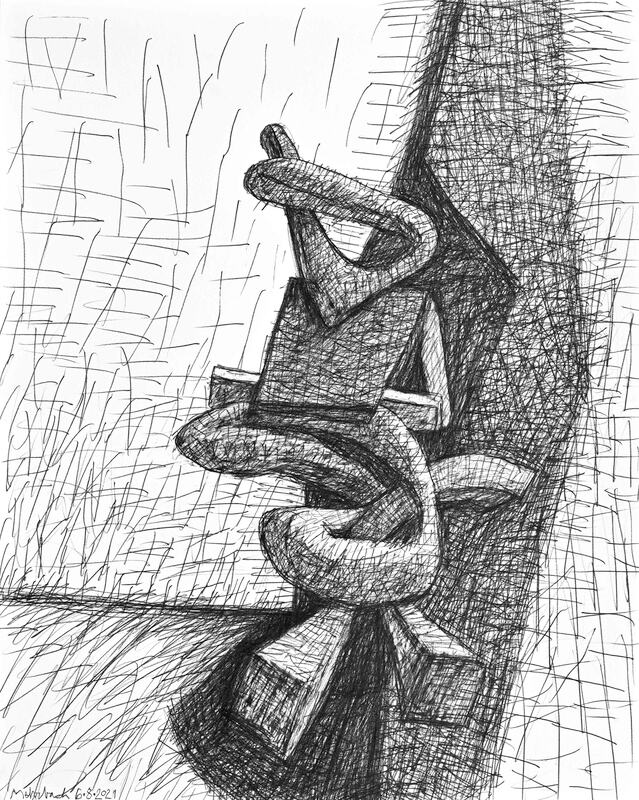
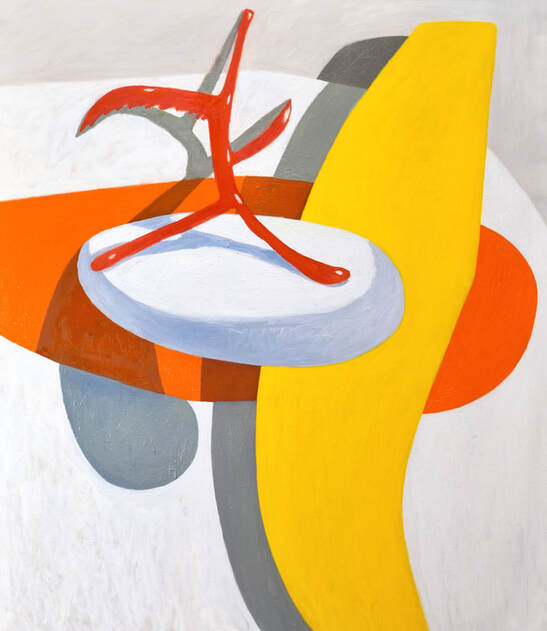
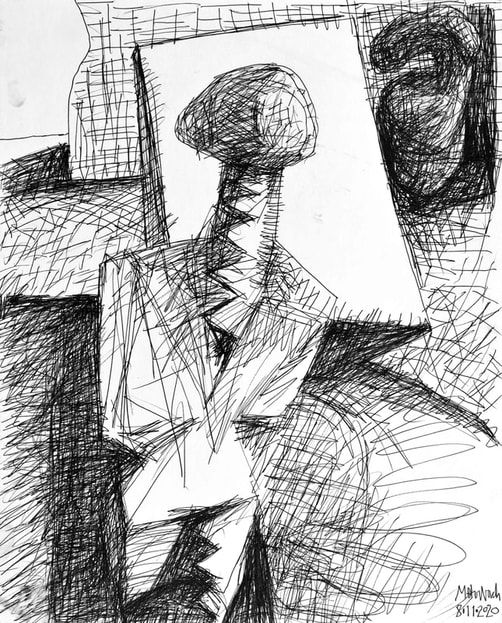
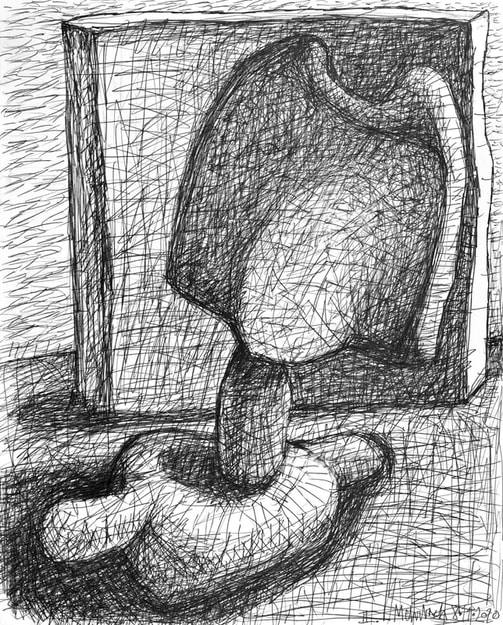
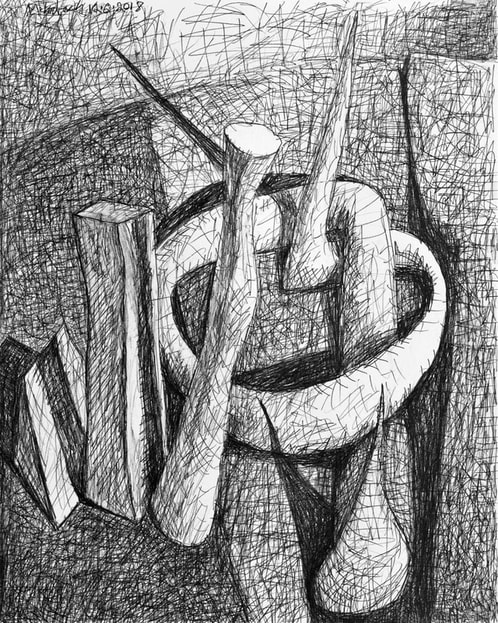
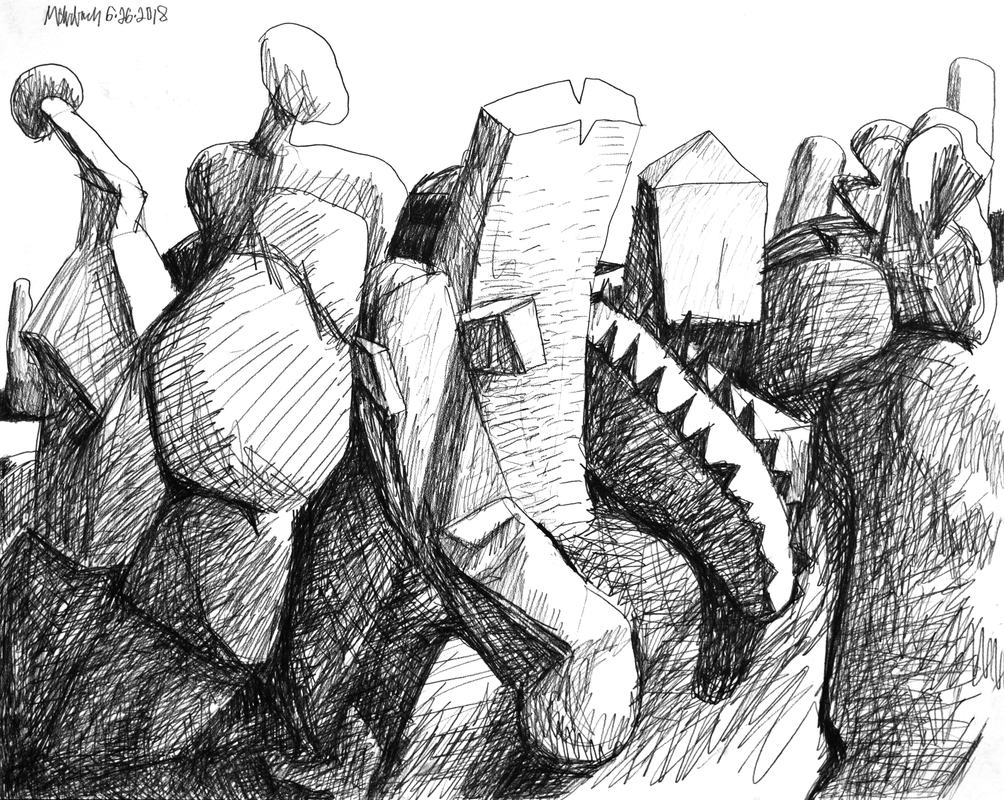
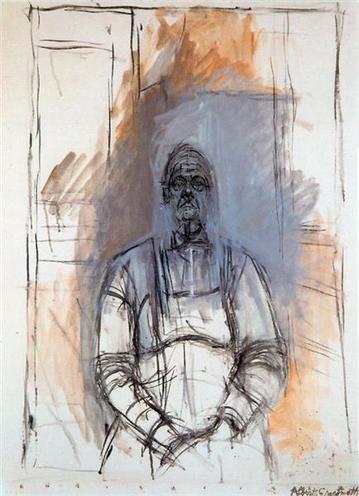
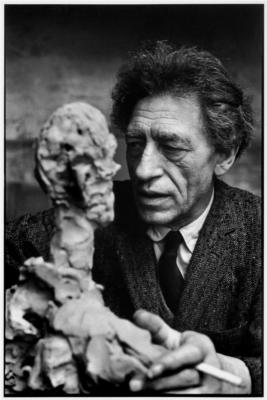
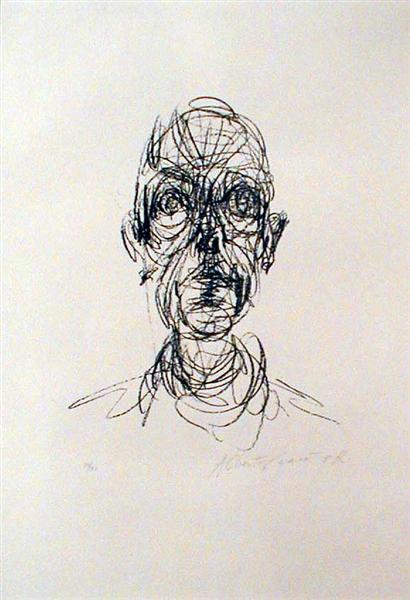
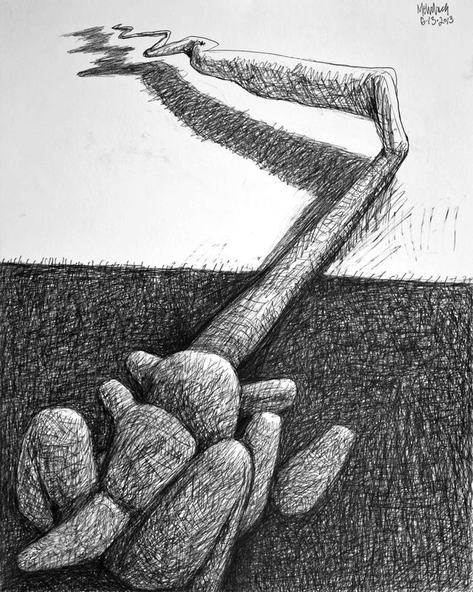
 RSS Feed
RSS Feed